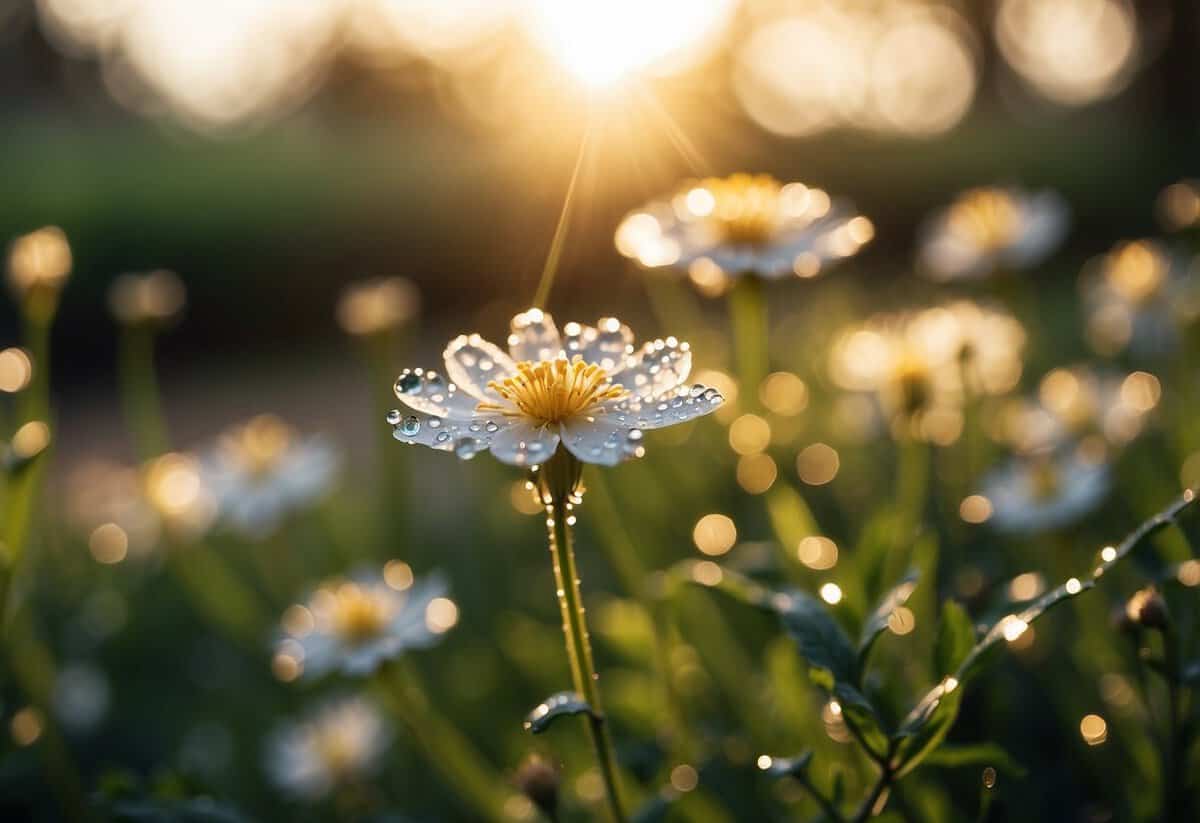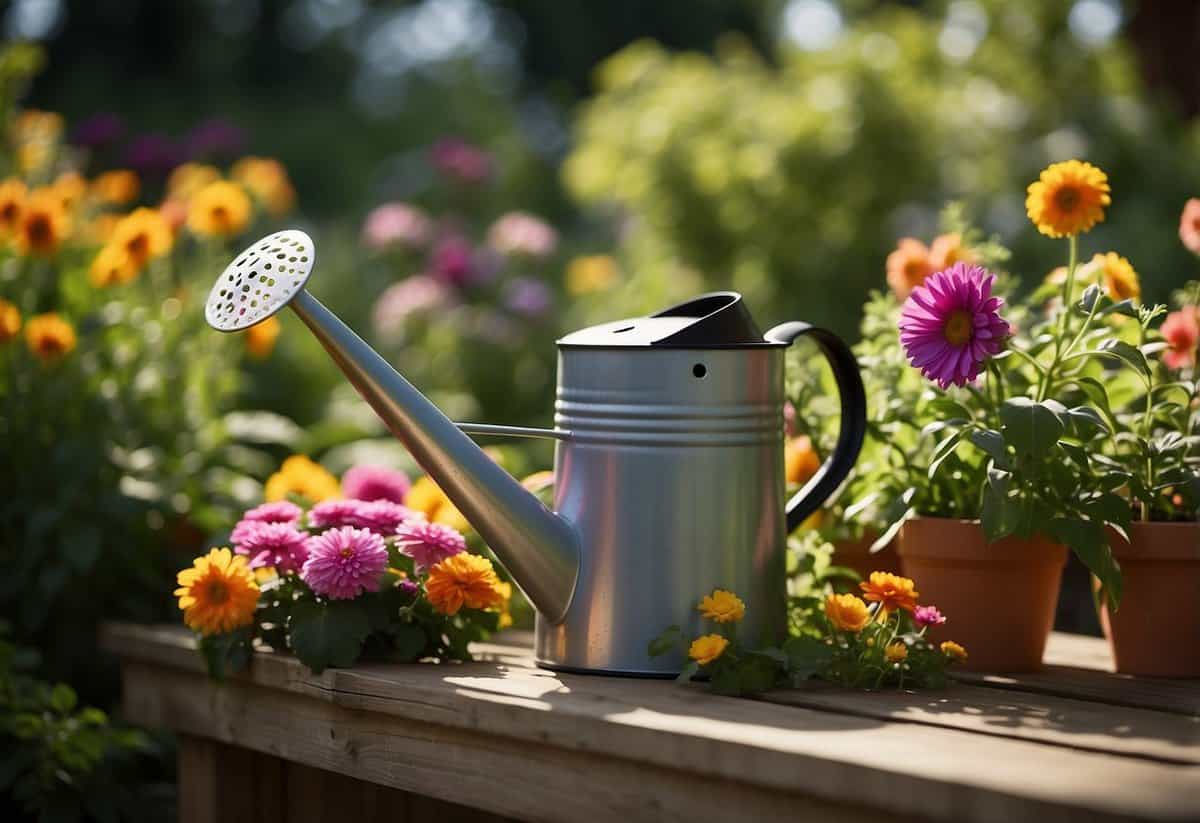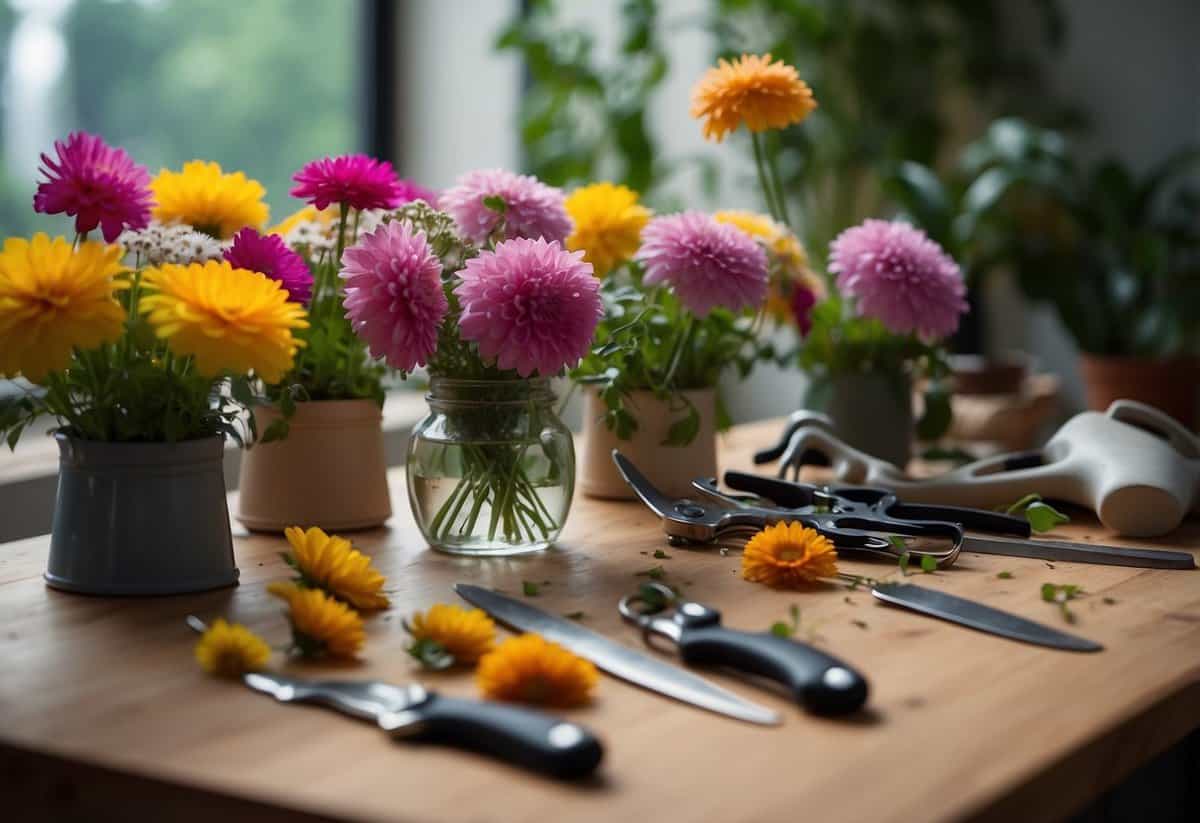Cut Flower Garden Tips: Essential Advice for Beautiful Blooms
Creating a cut flower garden can be a delightful and rewarding experience. It allows you to enjoy fresh, vibrant blooms right from your backyard. This garden offers a beautiful display and the joy of arranging your own bouquets.

A well-planned cut flower garden can provide continuous blooms throughout the growing season. With a few simple tips and strategies, you’ll be able to grow healthy, beautiful flowers that brighten your home and garden. Whether you’re new to gardening or a seasoned pro, these tips will help you create a stunning and sustainable cut flower garden.
1) Choose Seasonal Blooms

It’s smart to pick flowers that bloom in different seasons. This way, you’ll have beautiful flowers year-round. Spring flowers like tulips and daffodils shine early, while summer blooms like zinnias and sunflowers steal the show in the warmer months.
In fall, chrysanthemums and asters thrive. Winter might be tougher, but hellebores and winter jasmine can add color. Mix it up, so there’s always something blooming in your garden. Consider your local climate and soil when choosing plants for the best results.
2) Plant in Rich Soil

To grow a beautiful cut flower garden, start with rich soil. Healthy soil provides the nutrients flowers need to thrive.
Before planting, test your soil. Add compost or well-rotted manure to improve its quality. This boosts drainage and adds essential nutrients.
Consider using organic matter. Mulching helps retain moisture and adds more nutrients as it breaks down.
3) Ensure Proper Drainage

Proper drainage is key for a healthy cut flower garden. Without it, water can pool and rot your plant roots. Raised beds can help a lot with drainage because they lift the soil above ground level.
Make sure to set your raised beds with materials like wood or bricks that let water flow through. Add mulch on top to soak up extra water and keep the soil balanced.
Regularly check the soil to ensure it’s not too compact. Loose soil allows water to drain more effectively, ensuring your flowers get the right amount of moisture.
4) Use Organic Fertilizers

Using organic fertilizers can give your cut flowers a healthy boost. Compost tea, alfalfa, leaf mulch, and fish emulsion are great options for providing nutrients. These options help improve soil structure and promote strong flower growth.
Mix several inches of aged compost or well-rotted manure into the soil before planting. This will enrich the soil and support your flowers’ development.
5) Stake Tall Flowers

To keep your tall flowers upright, use soft tie wire. Cut a piece with scissors and wrap it around a group of upright flowers.
For larger beds, drive stakes into the ground at each corner and stretch mesh or plastic netting about 18 inches above the soil. As the flowers grow, they’ll come up through the netting, which gives them the support they need. Learn more about this method from Stacy Ling.
For a natural look, find an anchor of sturdy flowers nearby and secure the soft tie to them. This way, your garden maintains its beauty while staying neat.
6) Regularly Deadhead Blooms

To keep your cut flower garden looking its best, regularly deadhead blooms. This means removing spent flowers from the plant. Doing this encourages the plant to produce more flowers.
Use scissors or pruning shears to snip off the old blooms. Be gentle to avoid damaging the plant. Some plants need you to cut just above the nearest leaf, while others may need different methods. Refer to this guide for specific plant instructions. Regular deadheading keeps your garden vibrant and full of fresh flowers.
7) Practice Crop Rotation

Crop rotation means growing different types of flowers in the same spot each year. This helps prevent pests and diseases from building up in the soil.
Moving your flowers around can also keep your soil healthy. Different plants take and give back different nutrients, so rotating them keeps the soil balanced.
It’s a simple way to make sure your cut flower garden stays vibrant and productive. Learn more about crop rotation at Old Farmer’s Almanac.
8) Keep Pests at Bay Naturally

You can keep pests out of your cut flower garden by planting pest-repelling flowers. Alliums, which include garlic, onions, and chives, deter aphids and Japanese beetles with their strong smell.
Nasturtiums also help by repelling whiteflies and beetles. They work well as companion plants and add a splash of color.
Planting a variety of flowers helps attract beneficial insects that feed on pests. This method keeps your garden healthy without chemicals.
Try adding plants with strong scents, like wormwood, to keep ticks away.
9) Water Early in the Morning

Watering your cut flower garden in the early morning helps your plants absorb moisture before the sun gets too hot.
This helps to reduce evaporation, ensuring more water reaches the roots where it’s needed most.
Watering early can also prevent fungal diseases, as the foliage has time to dry out during the day.
It’s a simple habit that can keep your garden healthy and thriving.
10) Provide Ample Sunlight

Your cut flower garden needs at least 6 hours of direct sunlight each day. Morning sun is best because it provides the benefits without too much heat.
Most flowering plants thrive in full to partial sun. Consider the light needs of your chosen flowers and plan their placement accordingly. Learn more about light requirements and best practices on Epic Gardening and Green Garden Cottage.
Place your garden in a spot that gets as many hours of morning sun as possible.
Basics of a Cut Flower Garden

Growing a vibrant cut flower garden involves picking the right spot and ensuring the soil is properly prepared. These steps can help you create a thriving garden that provides beautiful blooms for your home.
Choosing the Right Location
Your cut flower garden needs at least six hours of sunlight each day. The best spot is one that gets plenty of morning sun, which helps the flowers dry off early and reduces disease. Aim for an area that is open and sandy, away from buildings or trees that can cast too much shadow.
Good air circulation is also essential. It helps prevent mildew and other issues that can affect your plants. Avoid low spots where cold air and frost can gather. If you live in a windy area, consider planting a hedge or using a windbreak to protect your flowers.
Soil Preparation
Start by testing your soil to determine its pH and nutrient levels. Most flowers prefer soil that is slightly acidic to neutral, between 6.0 and 7.0 on the pH scale. If your soil is too acidic or alkaline, you may need to amend it with lime or sulfur accordingly.
Work in plenty of organic matter, such as compost or well-rotted manure. This improves drainage, provides nutrients, and helps retain moisture. It’s also a good idea to ensure the soil is loose and well-drained.
Use raised beds if your native soil is poor. They offer better drainage and can be filled with a high-quality soil mix. Mulching around your plants can help retain moisture and keep weeds at bay, ensuring your cut flowers grow strong and healthy.
Seasonal Care for Cut Flowers

Proper care throughout the year ensures your cut flower garden remains healthy and productive. Focus on key practices for each season to keep your flowers thriving.
Spring Planting Tips
Planting in spring sets the stage for a fruitful cut flower garden. Begin by preparing the soil. Clear out any weeds and mix in compost to enrich the ground. This improves soil health and promotes strong root development.
When choosing flowers to plant, consider a mix of annuals and perennials. This ensures a continual bloom throughout the season. It’s smart to plant seeds at the recommended depth and spacing to avoid overcrowding.
Lastly, water the garden thoroughly after planting. Keep an eye on the seedlings and ensure they receive consistent moisture. Use mulch to help retain soil moisture and suppress weeds.
Summer Maintenance
Summer care is crucial for a successful cut flower garden. Regular watering is important, especially during dry spells. Aim to water early in the morning to minimize evaporation and give the roots time to absorb moisture.
Deadheading, or removing spent flowers, encourages more blooms and keeps the plants looking tidy. Pinch back the tips of flowers like zinnias and cosmos to promote bushier growth.
Keep an eye out for pests such as aphids and spider mites. Use natural remedies like neem oil or introduce beneficial insects to control these pests. Also, ensure proper air circulation to prevent fungal diseases.
Fall and Winter Protection
As the seasons change, preparing your garden for colder months is key. In late fall, add a layer of mulch around the base of your plants. This helps insulate the roots and preserves soil moisture.
For tender perennials, consider using frost cloths or cloches to protect against early frosts. Pruning back dead or diseased foliage reduces the chance of overwintering pests.
During winter, keep the garden beds clean and free of debris. If necessary, add another layer of mulch to further protect the plants from severe cold. Planning for winter ensures your cut flower garden returns strong and vibrant in the spring.
Extending the Bloom Life

To keep your cut flowers looking fresh longer, you need to handle them properly from the start. Techniques like cutting stems at an angle and managing them carefully post-harvest are crucial.
Proper Cutting Techniques
Cut stems at a 45-degree angle using a sharp and clean pair of scissors or garden shears. This increases the surface area for better water absorption.
Avoid crushing the stems. Damaged stems make it hard for flowers to take up water.
Cut the stems underwater if possible to prevent air bubbles from entering the stems, which can block water absorption.
Remove any foliage that will be below the water line in the vase to minimize bacterial growth.
Post-Harvest Handling
Place the flowers in clean water immediately after cutting to prevent them from wilting. Change the water every two days to keep it fresh and prevent bacteria.
Add flower food or a homemade mix of 2 tablespoons of vinegar, 2 tablespoons of sugar, and 1 quart of lukewarm water. This provides nutrients and keeps bacteria at bay.
Avoid placing flowers in direct sunlight or near heat sources as this can cause them to dry out quickly. Similarly, keep them away from drafts and ripening fruit, as ethylene gas from the fruit can speed up aging.







